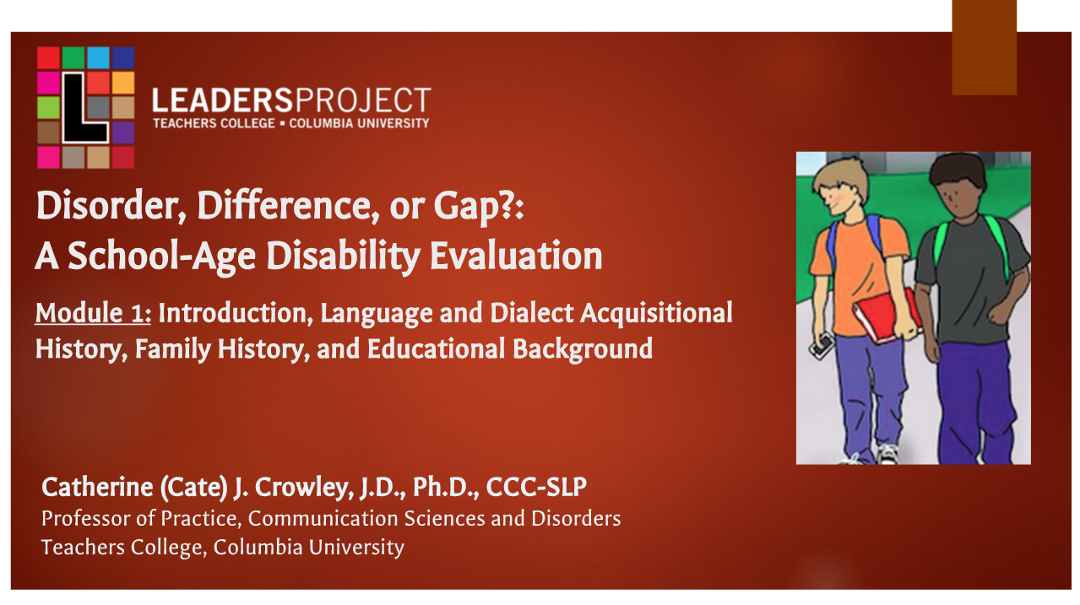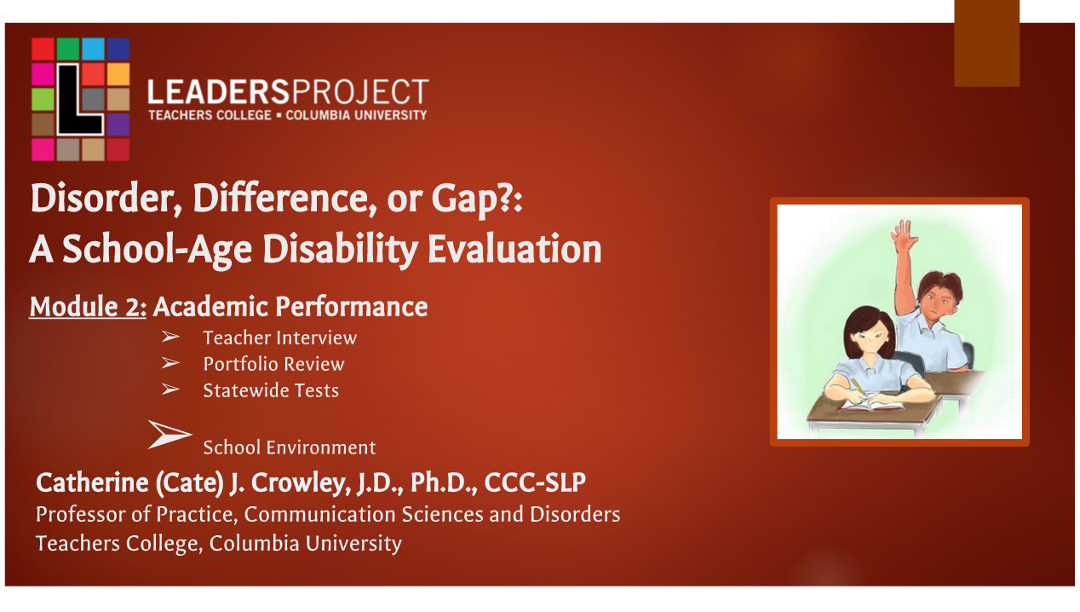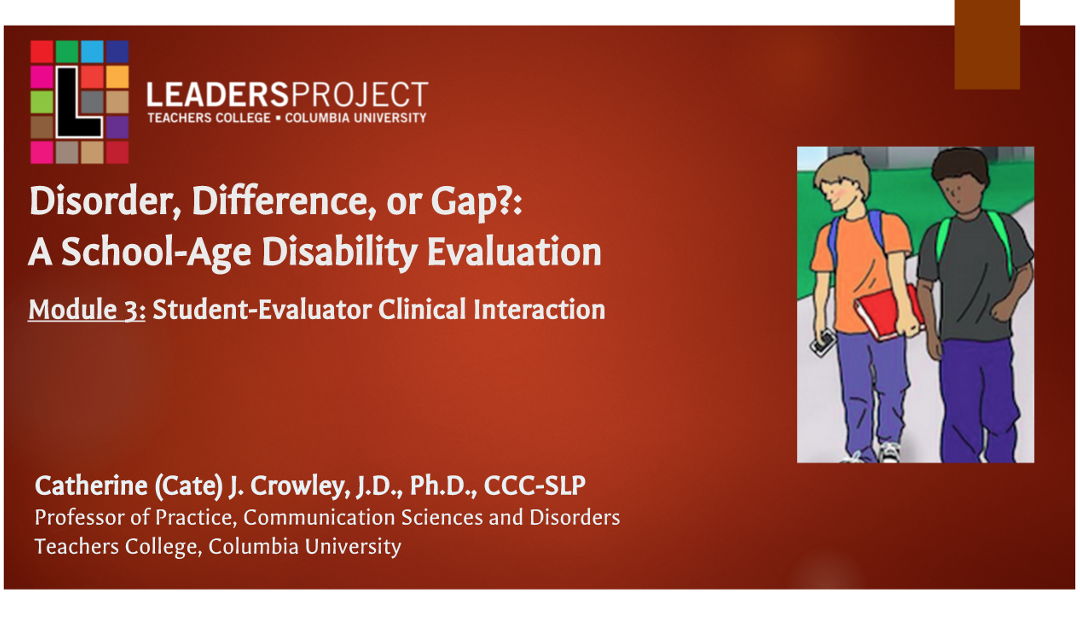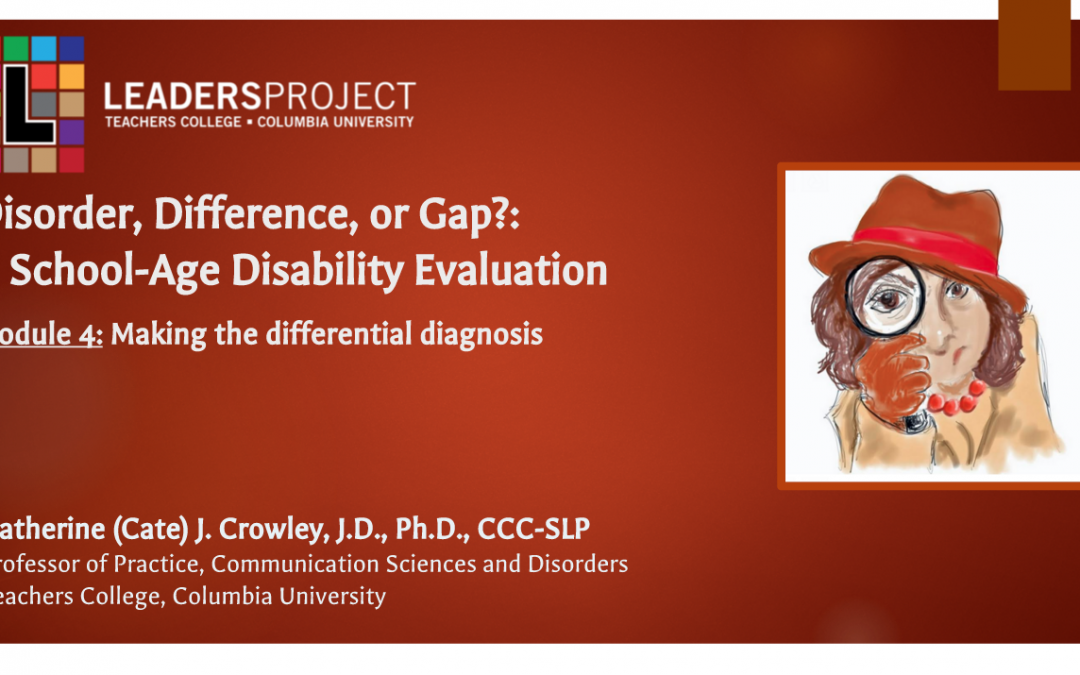
by Kristin | Aug 27, 2016
In the fifth module of this series, Cate discusses characteristics of a quality Early Intervention evaluation. She explains that evaluators must include specific data learned during the assessment and make “vignettes” or “holograms” paint a picture of the child. Then, she guides us through cases of real children, demonstrating how to use informed clinical opinion to make rich observations about their communicative, cognitive, and motor functioning. Finally, Cate gives examples of what a “vignette” or “hologram” looks like in a written evaluation.

by Kristin | Aug 27, 2016
In the sixth module in this series, Cate presents research on bilingualism in children 0-3 years of age and explains when a bilingual evaluation is necessary in Early Intervention. She goes over essential skills that every bilingual evaluator should have and talks in-depth about how to work with an interpreter in a culturally and linguistically appropriate way. Finally, Cate presents case studies of bilingual children under the age of 3 that demonstrate the influence of bilingualism on early language development.

by Kristin | Aug 27, 2016
In the seventh and final module in this series, Cate provides information on Childhood Apraxia of Speech and discusses the recent over-diagnosis of this speech disorder in NYC Early Intervention. Then, she presents various examples of EI Apraxia evaluation write-ups and talks us through the differences between high and low quality reports.
by Leaders Project | Jan 12, 2016
Sofie is a 13 year, 6 month old bilingual English-Spanish speaking female.

by Leaders Project | Jan 2, 2016
In this playlist, Dr. Cate Crowley walks evaluators through a step-by-step approach to how to assess and evaluate a school-aged child based on current federal law, state regulations, ASHA guidelines, and evidence-based practice.

by Kristin | Jan 2, 2016
Cate introduces the module series, explaining the evidence an evaluator needs to distinguish a true disorder from a language difference or academic gaps resulting from a lack of adequate educational instruction.

by Kristin | Jan 2, 2016
In this module, Cate looks at Sofie’s academic achievement through past standardized test scores, an extensive teacher interview, observations of her schoolwork, and information from Sofie and her mother.

by Kristin | Jan 2, 2016
In this module, Cate analyzes the results of her direct clinical interactions with Sofie.

by Kristin | Jan 2, 2016
In this module, Cate focuses on making Sofie’s differential diagnosis to distinguish a disorder from a difference from an academic gap.
by Leaders Project | Dec 18, 2015
In this playlist, Dr. Cate Crowley walks evaluators through a step-by-step approach to how to assess and evaluate a school-aged child based on current federal law, state regulations, ASHA guidelines, and evidence-based practice.








![[feed link]](/wp-content/plugins/rss-just-better/rss-cube.gif)